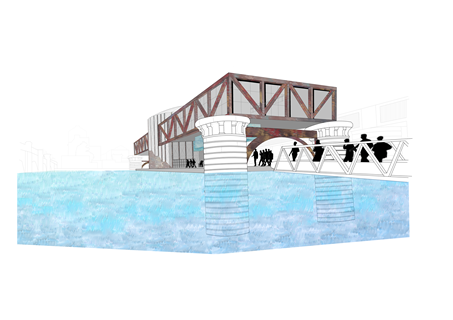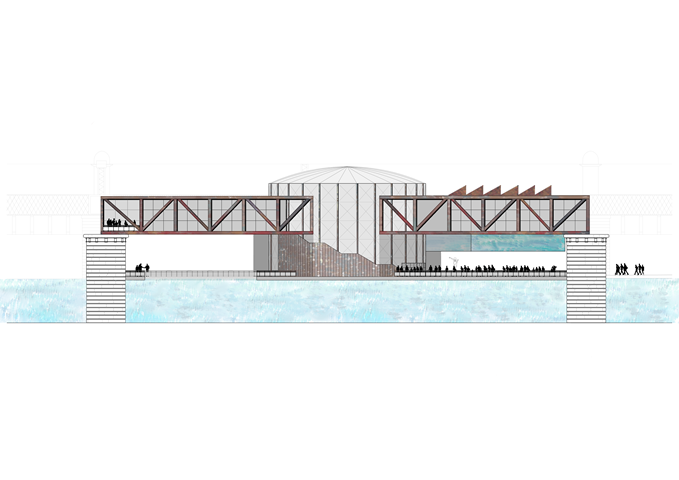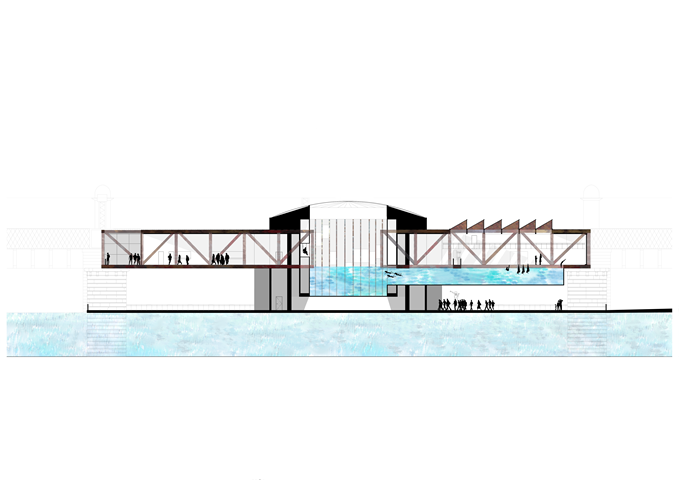Design Studies 3B
An Abstract Look at the Future of Synchronised Swimming
Look Up / Look Down
The aim of this proposal was to begin the process of redefining the way that the audience and the performers interact within the art of synchronised swimming. It is an abstract piece focusing on mechanics, interconnection, and a deep-rooted base in the history of the sport.
Located on the Old Caledonian Railway Viaduct crossing the River Clyde, the general form is based on a simple bridge architecture while keying in inspiration from the work of Richard Rogers. The trusses provide a frame for the programme - all while allowing for a glimpse into the building through the semi-transparent façade.
The pool itself - the key focus - appears to float above the river due to the glass base and transparent frame. The drum which it sits in takes precedent from Victorian gas holders, a link back to the industrial history of the site, while the lifting mechanisms which allow the audience to view the sport are inspired by travelling circuses and theme park rides (a link back to the origins of synchronised swimming as a circus side show).
The journeys of the performers and the audience are interwoven: each group enters the building at the same place, splits off into the café and exhibition space, or the changing and training area, and then the groups are reconnected at the pool - with everyone viewing or performing in close proximity.
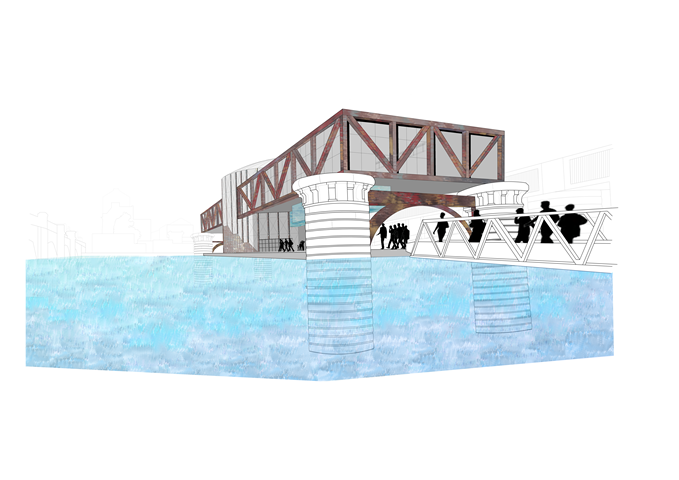
From the Riverbank
Entry onto the structure- where the performers and the audience walk below the exposed glass training pool and gain glimpses of the performance pool and the lift mechanisms through the semi-transparent drum.
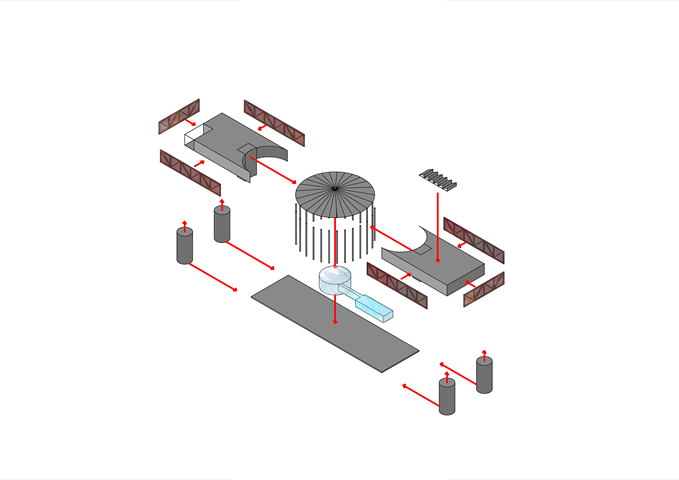
A Flatpack Design?
Each element of the design comes together to create one multifaceted structure, with steel forms, concrete boxes, glass pools and the existing stone pillars slotting into each other. The elements combine to create a futuristic framed structure which encompasses both modern technologies and traditional bridge design.
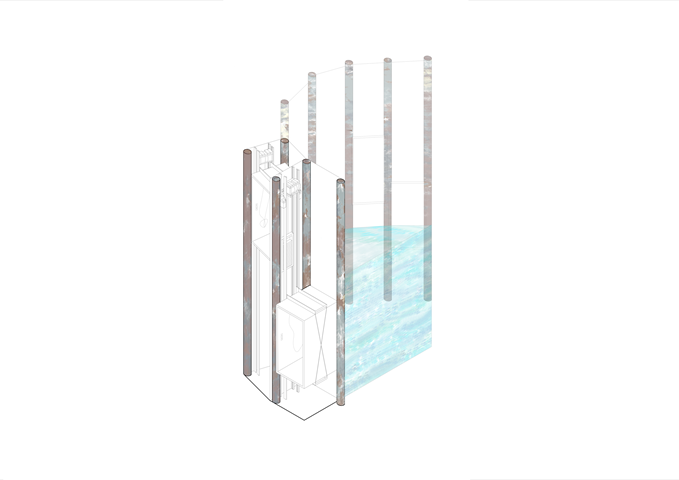
The Lifting Mechanism
To view the sport, an audience member has complete control over at what angle or position they wish to use. Using multiple lifts with glass fronts, the audience moves up and down to see the sport from above the water, below the water, or even both at the same time.
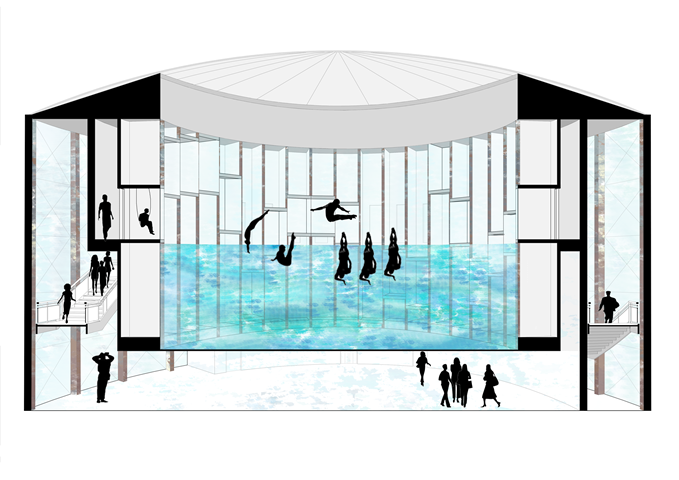
The Drum
Despite being the 'end of the journey' for both the performers and the audience, the user gets glimpses of the performance space from below or from the side as the make their way into the building. The glass walls of the drum allow passers-by to also begin to see into the building to see what awaits them if they venture inside.
